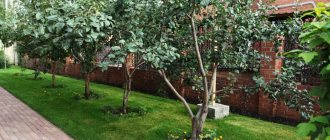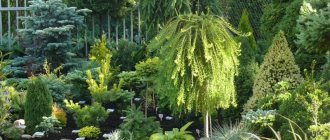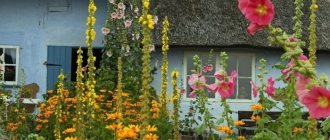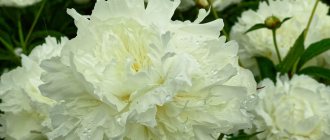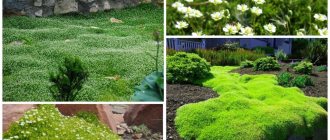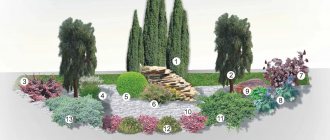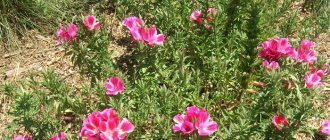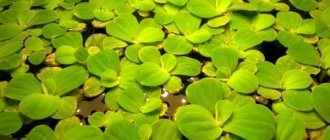Text and photo: Marina Ponomareva, landscape designer, teacher at the International Academy of Business on the course “Flower bed design”
There is still snow outside the windows, the winter days are short, but you think about summer - very little time will pass, the sun will warm up, and all the gardeners’ aspirations will be connected with the new field season that is beginning. And now is the time to arm yourself for the future flower decoration of the site.
Creating flower beds is the final chord in the development of the site. This decorative element of garden design appears when the functional zones of the site are determined, paths are laid, trees and shrubs are planted, and a lawn is made.
When considering the variety of types of decoration of areas with flowers, it is necessary to take into account the layout of the territory, which can be regular (formal) and free (landscape), which corresponds to the two main styles in landscape architecture. The regular principle of organizing garden space is associated with the use of straight lines, symmetry and geometry. Plants with a clear geometric structure, trimmed forms of trees and shrubs are used; one of the main elements of a classic regular landscape is the parterre - a composition in a horizontal plane, usually in a large open space.
Landscape principles of garden design are more varied and complex than regular ones, and amaze the imagination with their perfection, beauty, and grace. These are soft contours, many vantage points, a natural and organic connection with the surrounding nature, an ecological approach to the selection of an assortment of plants. Many elements of floral and decorative design are universal and can be used in gardens with both a regular structure and landscape layout. Let's consider all the variety of types of flower beds for different decorative purposes.
Flowerbed
The most popular type of flower garden is a flower bed. It’s hard to imagine a suburban area without it. And all because when creating it, the grower is not limited by any boundaries. A flower bed can be of any shape and size. Sometimes it is framed with a border: with borders, the flowerbed looks more elegant. The gardener is also completely free in choosing plants. The only condition is that the shortest flowers need to be planted in the foreground, and the taller ones in the background. A flower arrangement can always be supplemented with interesting garden figures.
Rabatka
Rabatka is a very impressive narrow rectangular strip of land from 50 to 150 cm wide, on which plants of the same height are planted. The name comes from the German word rabatte, which means “bed”. For gardeners, this is a very simple and understandable form; it is used by owners of small garden plots, because simple forms of ridges fit most harmoniously into small garden spaces.
The classic discount has clear construction rules. Its length must be at least three times the width. It can be unilateral or bilateral. The average height of the plants should be approximately 1/4 to 1/2 the width of the ridge. The ridges are placed against some background or most often along the paths - both on one and two sides. One-sided edges are more appropriate along the walls of houses and fences, and two-sided along paths. Plants are planted in a simple geometric pattern of two or three colors. The design of an ornamental ridge usually consists of rhythmically alternating elements. The edge of the ridge is sometimes decorated with a border. Accenting is often used when designing it. In this case, the ridge is interrupted by an accent - a tall perennial or ornamental shrub. This could be a standard rose “Schneewittchen” (h = 90 cm), used in a ridge of ground cover rose “Palmengarten Frankfurt” (h = 70 cm) with a border of lobelia, as in the picture.
Decorative vegetable garden
An ornamental vegetable garden is not exactly a flower garden, but rather beds framed by a flower border. What is it for? Firstly, such a composition is rare and therefore looks very unusual. Secondly, it helps to save space in a small summer cottage. And thirdly, some ornamental plants can protect vegetables from diseases and pests. It is best to arrange a decorative vegetable garden in low boxes, and the plants should be placed so that it is easy and convenient to harvest. Mallow, chamomile, cornflower or oregano are suitable for edging the beds.
Array
An array is a large flower bed (from 20 m²) of arbitrary shape, consisting of one type of perennial or different varieties of the same species, planted in large quantities.
The array is located at a distance from the viewpoint. When selecting plants, it is very important to consider how it will look before and after flowering. Plants are selected with bushes that do not fall apart and long-lasting foliage (volzhanka, astilbe, iris, daylily, hosta, fern, geranium, cereals). Arrays are used in park landscaping or in large areas.
Modular flower garden
Modular flower garden is a trend in landscape design. It is a composition consisting of small flower beds united by a common concept. At the same time, small flower beds must be of a certain size and shape. The space between the module flower beds can be decorated with sand, gravel, pebbles, paving slabs or lawn grass. It is best to plant low-growing (nasturtiums, daisies, marigolds) or ground cover (periwinkle, primrose, alpine carnation) crops in a modular flower garden.
Regardless of what kind of flower garden you are going to plant on your site, pay attention not only to the form, but also to the content. It is very important to choose the right plants according to their color scheme, flowering time and growing criteria. Then your flower garden will definitely attract the attention of others.
Flower group
The simplest and most common type of landscape floral design is a flower group. These are plantings consisting of plants of 5–8 species, each of which is represented in small quantities. The group has free outlines.
Group plantings can be planted in the form of a round flower bed, a small bed, a border or an island flower bed. Such a flower garden is arranged on the lawn, against the backdrop of compositions of shrubs or under the canopy of sparse trees at a short distance from the view point. According to the composition of plants, a group can be made up of plants of the same or different species. Selecting a group of plants of different species is quite difficult, and one has to take into account the parameters of environmental compatibility, the height of the plants, the timing of their flowering, and decorative features (the shape of the leaf blade and inflorescence, the color of the flowers). Depending on the time of use, groups can be seasonal or permanent. Seasonal groups are unusually impressive, since the plants in them bloom during a specific period: spring, summer or autumn.
Recommendations from gardeners
Many experienced gardeners and summer residents advise carefully and correctly treating the container or place where you will plant flowers.
When using iron containers and metal fences, it is necessary to treat the wood with an antiseptic agent. If you have a small area, a lot of trees and buildings, you can use hanging flower beds or flowerpots. Plastic bottles are a good option for multi-level hanging pots.
If you want to create a paradise on your property, take a good look because there is so much under your feet that you wanted to throw away or burn, and if you put in a little effort and money, you will have a piece of paradise.
Where to begin
Having decided to create a decorative corner - a flower bed - in your garden plot, you need to perform several sequential operations:
- Collect illustrative material (magazines with flower bed diagrams, websites on landscape design, gardening forums on the Internet will help with this).
- Decide on desires and capabilities (what plants you like, what will survive in a particular climate, what are the financial resources allocated for the purchase of planting material).
Growing the required number of specimens from seeds yourself will help reduce financial costs. This process takes more time, but does not put a strain on the family wallet, especially if the area of the flower beds is large and the number of plants approaches a hundred or more.
- Lay out a flowerbed, think about its fencing (stone, wood, concrete, plastic, earthen ditch separating the flower bed from the lawn).
- Prepare the land for planting (add the necessary soil components, apply the required fertilizers).
- Create a diagram (your own sketch) taking into account the dimensions (height and width) of the plants.
- Decide how the flowerbed will be planted - for growth or so that it looks good on the first day. Calculate planting density.
- Place pots with plants in the area to check the correctness and harmony of their placement not on paper, but visually.
- Plant and water. Mulch open areas of soil between plants, leaving clean soil 10-15 cm from the stems (trunks).
- Support the survival rate of plants (provide the necessary watering, shading if the weather is very hot).
- Enjoy the result and start making new plans.
Which plants to choose
In order for the flower garden to charm guests and delight the family for a long time (for example, peonies and clematis grow in one place for several decades), select only climate-resistant, unpretentious plants. Having planted specimens that you really like, but require care and shelter and do not tolerate Russian winters well, you will carefully care for them.
However, after 3-5 years, removing dead bushes that did not survive the winter in the spring, you will realize that you no longer have the strength to care for the whims. At this moment, you will come to the decision to replace all the “southerners” with zoned ornamental plants. So why not immediately pay attention to those flowers that feel good in your climate?
The initial selection of suitable planting material for flower beds, varieties and species that are resistant to the climatic conditions of the region has many advantages:
- Easy maintenance (no need to build serious winter shelters).
- Preservation of one’s own nervous system (no worries about plants that are poorly covered or opened at the wrong time, fears of damping off, getting wet, damage by moles or mice that love to live under shelters in winter).
- Lower financial costs (there are no costs for purchasing new replacement plants).
- Labor costs are reduced (there is no annual digging up of “dead” specimens and planting new ones in their place).
- A more neat appearance of flower beds in winter (even snowy spaces with bushes covered with frost or snow caps look much more presentable than wooden boxes or arc structures throughout the area).
Every passionate summer resident who feels like a landscape designer of a particular plot needs a rest. Without time to admire your own achievements, there will be no pleasure from the completed task and country life in general. Therefore, plant more unpretentious plants, they will allow you to enjoy the surrounding beauty more.
Color combination
When creating any flower bed, it is very important to select the correct plants by color. In general, competent selection of colors plays a vital role in any artistic work, as well as the landscape design of a private yard itself. When planning a flower bed, you should take into account that the following color combinations harmonize very well:
- scarlet with green and yellow;
- lilac and violet with yellow;
- blue with yellow and orange.
White and pale pink can be used as a smoothing color between two contrasting colors. The principle of harmony does not mean at all that only such combinations are allowed. Experienced gardeners can use any combination, but in order to prevent the flower arrangement from turning out tasteless, they should be very careful and attentive to the selection of plants. In this regard, Japanese gardeners are indicative; using a minimum of plants and flowers, they achieve maximum artistic expression.
When distributing plants by height, there are also certain rules. Typically, a flowerbed resembles a cone, so the shortest flowers are planted at the edges, then there is a line of medium-sized plants and the tallest flowers are placed in the center of the composition.
When constructing a flower bed in this way, the flowers that occupy the central place should be the brightest, since they are the dominant feature of the composition.
The next important criterion on which the selection of plants depends is the level of illumination of the place where the flowerbed will be located. There are plants that require bright sun, and there are shade-loving flowers. When choosing plants for a future flower bed, you should know which group they belong to. The following perennial plants can be planted in a sunny area:
- lilies;
- peonies;
- phlox;
- delphinium.
Primrose
Another group of plants thrives in the absence of sun, so they can be planted in the shade of other plants. Shade-loving plants include the following types of flowers:
- primrose;
- violets;
- begonia;
- rhododendron;
- Brunner.
If the flowerbed is located in partial shade, then by choosing the right plants you can achieve interesting results. A very beautiful garden plant, astilbe, which blooms with red and pink tassels, also does not like bright sun . It can be planted along the fence of the site.
In order to beautifully arrange your site and get the desired result, you need to know the type of soil.
The main category of soil is its degree of acidity.
That is, the soil can be alkaline or acidic. In order to conduct a soil analysis, you can use litmus paper. You need to mix a small amount of garden soil with distilled water and immerse litmus paper in this mixture. In an acidic environment it will turn red, and in an alkaline environment it will turn blue. A pH value above 7.5 means the soil is alkaline. Lupine, hydrangea, peony and roses feel good in acidic soils. The following plants prefer alkaline soils:
- garden carnation;
- calendula;
- Iberis.
In some cases, using chemicals or organic additives, you can change the acidity of the soil, but only experienced gardeners can do this.
When choosing flowers to plant in a flowerbed, you should also take into account the requirements of different plants for watering and the type of fertilizer. Some perennial plants, with an excess of nitrogen fertilizers, begin to grow into leaves and almost stop blooming, while many bulbous plants, on the contrary, bloom well when fertilized with nitrogen.
This type of flower bed is considered hanging.
The edges of the finished flower bed should be designed so that there is no feeling of the plants spreading. To do this, you need to dig a not too deep and not too wide groove around the perimeter of the flower bed and fill it with pebbles or small crushed stone. Many gardeners use decorative painted crushed stone. The color of this frame should be in contrast to the main color of the plants in the flowerbed.
Mixborders
Mixborders are very often confused with discounts (the confusion is further enhanced by the fact that mixborders are called mixed discounts), but the difference between them is easy to understand based on their nature and purpose. If a ridge is a strict rectangular flower bed with clearly defined contours, then a mixborder is a landscape version of extended flower beds. A mixborder is a framing flower garden that encloses a lawn, a recreation area, a pond, and the walls of buildings in a lush and bright frame of a mixed flower garden. Its shape is not limited to strict contours.
A mixed border can stretch along a path or around a lawn for tens of meters, and the width depends only on how much space can be allocated to the flower bed-frame. Taking into account the combination of different types of plants and multi-row planting, the minimum width of the mixborder is 1.5 m. When occupying an area more than 4 m wide, the mixborder is transformed into an array.
Mixborders are most often created from herbaceous perennials, adding shrubs and conifers as accents. They are created to match the style of the garden so as to look attractive not only throughout the active season, but also in winter. Plants are not planted strictly, but in groups, selected according to the principle of deep contrasts, visual peaks, seasonal accents and points of attraction for the eye are placed in the compositions.
Mixborders are created so that the space between large and solo plants is filled with more modest textural partners, background crops. Mixborder is considered an attribute of the design of a natural garden, but if desired, regular elements are introduced into it. It allows you to select the color scheme, vertical relief, and the nature of the compositions at your discretion.
Mixborder flower garden
